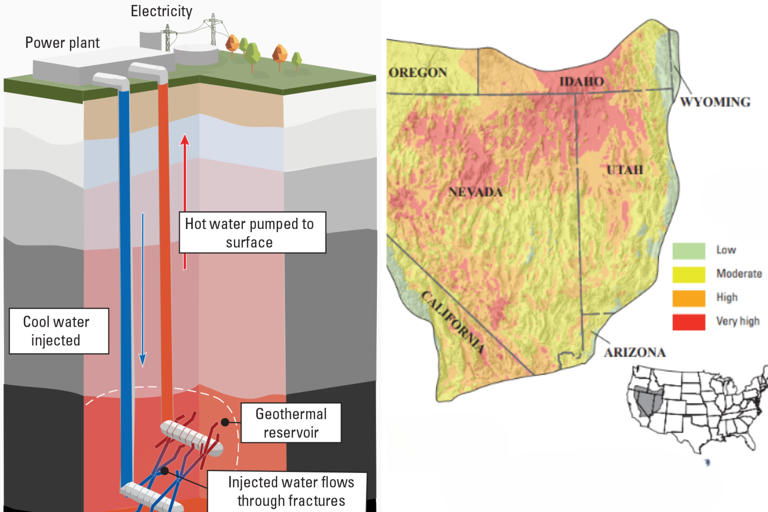
Geothermal energy from Nevada’s Great Basin could supply as much as 10 percent of the United States’ electricity needs, according to a newly released assessment by the U.S. Geological Survey (USGS).
The report estimates the area, which covers the majority of Nevada and extends into parts of Arizona, California, Idaho, Oregon, Utah and Wyoming, could generate 135 gigawatts of baseload power, if enhanced geothermal systems are deployed at scale.
What To Know
The U.S. currently generates about 3.9 trillion kilowatt-hours of electricity annually. A geothermal contribution of 10 percent, as projected, would mean the Great Basin alone could provide the equivalent of 390 billion kilowatt-hours, which would roughly match the current output of the U.S. nuclear sector.
Why It Matters
The USGS evaluation was conducted under the 2020 Energy Act, which saw the agency explore new ways of generating efficient energy from untapped resources.
It was part of the Joe Biden administration’s goal of a zero-emissions grid by 2035.
The report, published on Wednesday, includes newly developed maps of underground heat flows and refined extraction models that suggest geothermal deployment could increase the basin’s productivity.
Click here to read the complete article and video: https://www.msn.com/en-us/news/us/usgs-discovers-major-energy-boost-for-united-states/ar-AA1Fu8rr?ocid=msedgdhp&pc=DCTS&cvid=ff4d1f028ac74fa7a82c0e89c0194354&ei=34
